As someone who has been fascinated by reptiles and have been caring for them as a hobby, I am excited to share my personal insights about one of my absolute favorites – the crested gecko.
Owning a crested gecko is a rewarding experience, and unless you’ve literally never seen one before, you’re probably already tempted. Not only are they adorable, but their captivating personalities make them an excellent choice for reptile hobbyists like us. But, they need the right environment and care to thrive. I’ve got all the information you need right here, so let’s dive in.
Crested Gecko Tank
A comfortable and well-set tank plays a crucial role in your crested gecko’s happiness and health. In my experience, a 20-gallon tank works great for an adult gecko. Remember, these creatures are natural climbers, so height is more important than floor space. I’ve found that providing plenty of branches, leaves, and hideouts makes the tank mimic their natural arboreal habitat, ensuring your little friend feels at home.
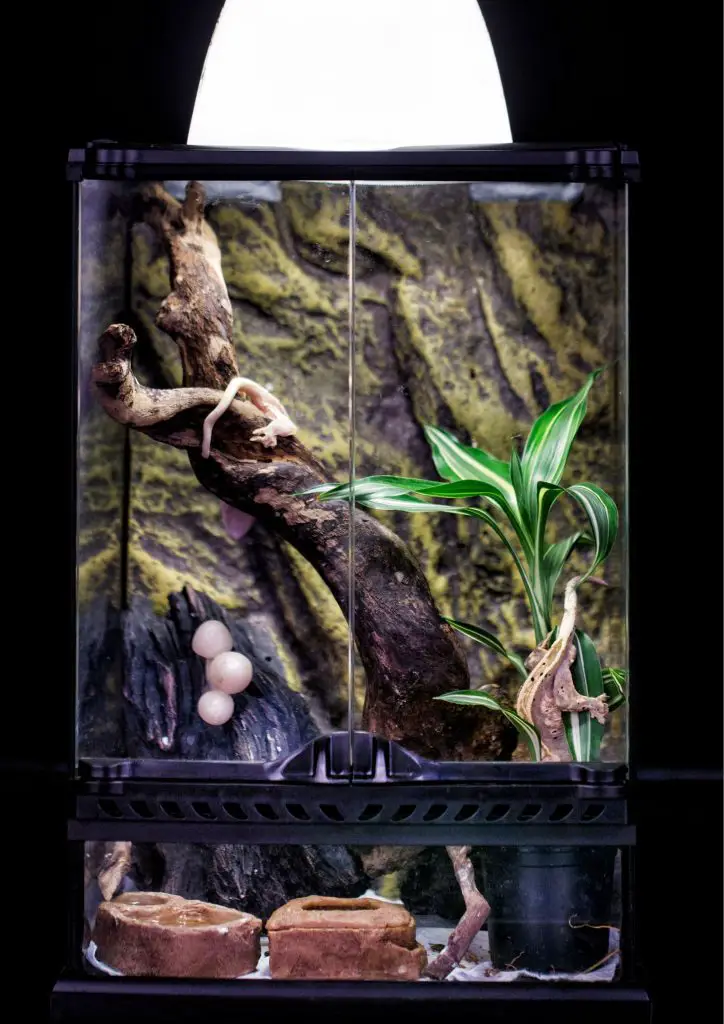
Crested Gecko Diet
Next up, let’s talk about food. Crested geckos have a diverse diet in the wild that includes insects, fruits, and even small lizards. In captivity, I’ve found success using a pre-made crested gecko diet that includes all the nutrients they need. I supplement this diet with live insects like crickets or mealworms a couple of times a week for some protein.
Also, never forget to dust the insects with calcium powder to prevent metabolic bone disease. This powder must also contain vitamin D3, given that Cresties are nocturnal. Your best bet is to source a supplement that is made specifically for Crested Geckos.
Crested Gecko Size
One of the factors that make crested geckos an excellent choice for hobbyists is their manageable size. From the tip of their snout to the base of their tail, adult crested geckos measure between 7 and 9 inches. The hatchlings, on the other hand, measure about 3 inches. This petite size makes housing and handling them pretty easy.
Temperature
Crested geckos thrive at room temperature, ideally between 70°F and 80°F. It’s essential to avoid temperatures above 85°F as it can cause heat stress. Many keepers have observed that their animals also seem uncomfortable if their temperature gets over 80°F, so this is always something to bear in mind. During cooler months, I use a low wattage ceramic heat emitter to maintain the temperature.
Depending on your setup, you can also use a low wattage heat mat taped to the side of the enclosure. This method apparently works for some people, but personally I never found it to be very good at heating adult enclosures.
Another option, which a lot of people do use, is an infrared heat lamp. These work – but produce light, making them less than ideal for overnight heating.
All-in-all, I personally think the best option is a ceramic heat emitter, used with a pulse-proportional thermostat. It should be mounted outside of the enclosure, for example on top of a screen top. Then, the thermostat probe should be placed a few inches below it.
Always double-check your temperatures with an infrared thermometer gun, and make sure your gecko can never get close enough to burn itself on a heat emitter or heat lamp.
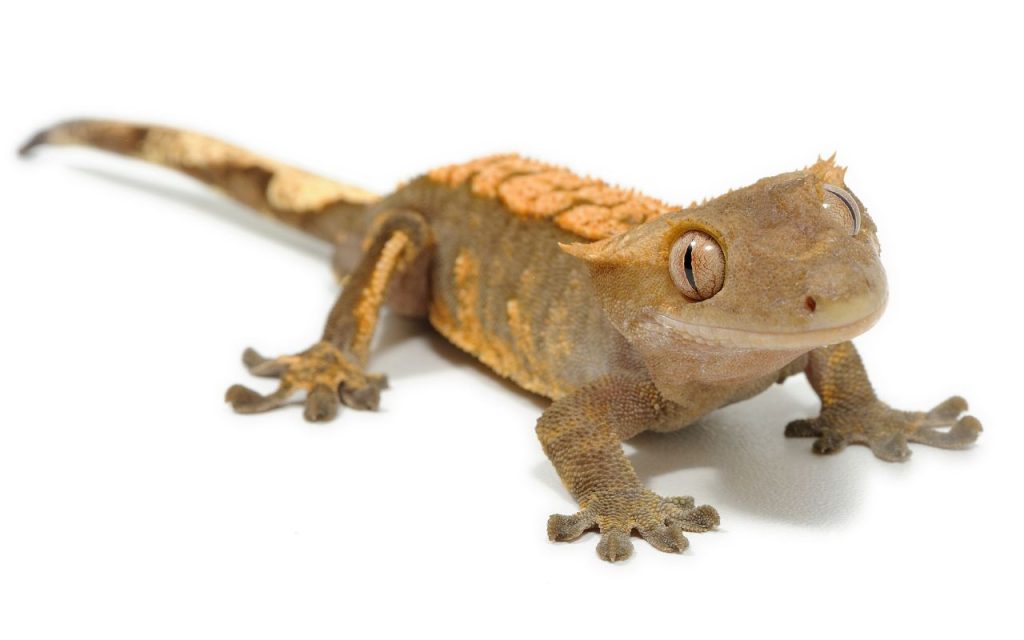
Humidity and Water
Crested geckos are native to New Caledonia, where the humidity is typically high. To replicate these conditions, I mist the tank with water twice a day. Maintaining a humidity level of around 70-80% is ideal, but you should also let the enclosure dry a little every couple of days to prevent excess mold growth. Also, always provide a small water dish for your gecko.
Lighting
Crested geckos are nocturnal, so they do not require UVB light. However, having a regular day-night cycle can benefit their overall wellbeing. I use a low wattage bulb to provide light during the day without producing excessive heat.
Alternatively, just a light on in the same room is just as good for regulating their circadian rythm. It does need to be on for 12 hours each day, though.
Hygiene
Cleanliness is key to keeping your crested gecko healthy. I clean the tank thoroughly once a week, removing any uneaten food or waste. Additionally, a bi-weekly deep clean with a reptile-safe disinfectant keeps the tank bacteria-free.
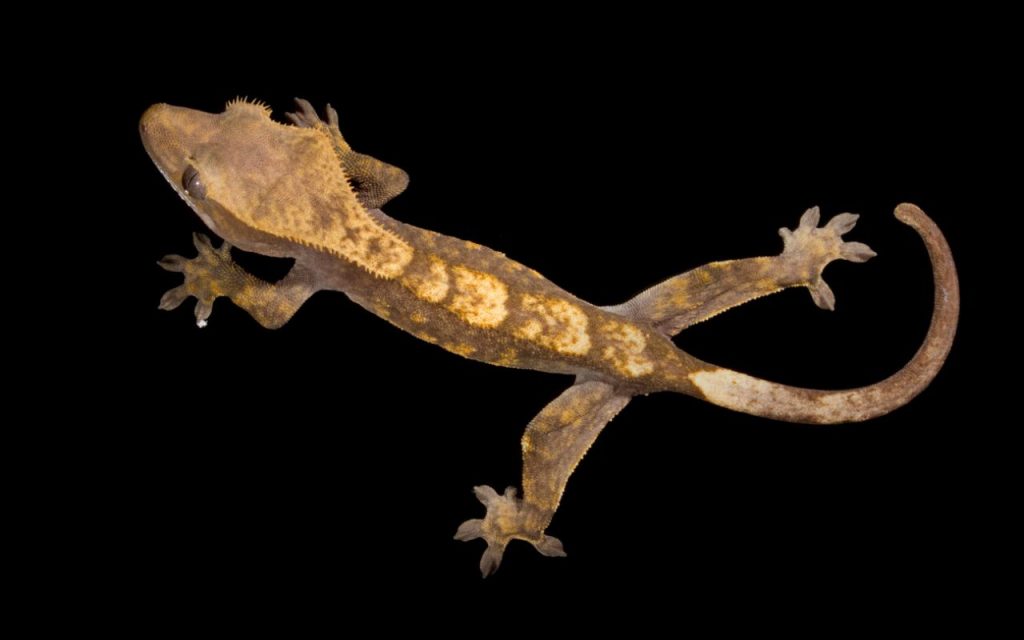
Common Health Issues
Like any pet, crested geckos can face health issues. Some common ones I’ve encountered are:
- Stuck shed: This always results from low humidity. Track your humidity levels with a hygrometer inside the enclosure and mist as needed.
- Metabolic Bone Disease (MBD): This is caused by lack of calcium in the diet. Ensure you dust their food with calcium powder which also includes vitamin D3.
- Impaction: This happens when your gecko ingests substrate. I always recommend using paper towels for juveniles to prevent this issue (adults seem to encounter the problem less often).
- Dehydration: Watch out for signs such as sunken eyes and lethargy. Always have fresh water available and mist the tank regularly.
Are Crested Geckos Friendly?
In my experience, yes, crested geckos are very friendly and rarely show aggression. They can be handled gently once they get used to you, making them perfect for first-time reptile owners.
If they ever bite, it’s generally by accident when you’re feeding them. It’s really not anything to worry about: their teeth are puny!
Crested Gecko Lifespan
With proper care, crested geckos can live between up to 20 years in captivity, although some have been known to live longer. This long-term commitment is something to consider before bringing a crested gecko home.
As with most reptiles, the environment you provide plays a huge role in their longevity. One reason this is the case is that the functioning of their immune system is directly related to temperature. If you keep them too warm or too cold, they will eventually get sick, and almost certainly die younger.
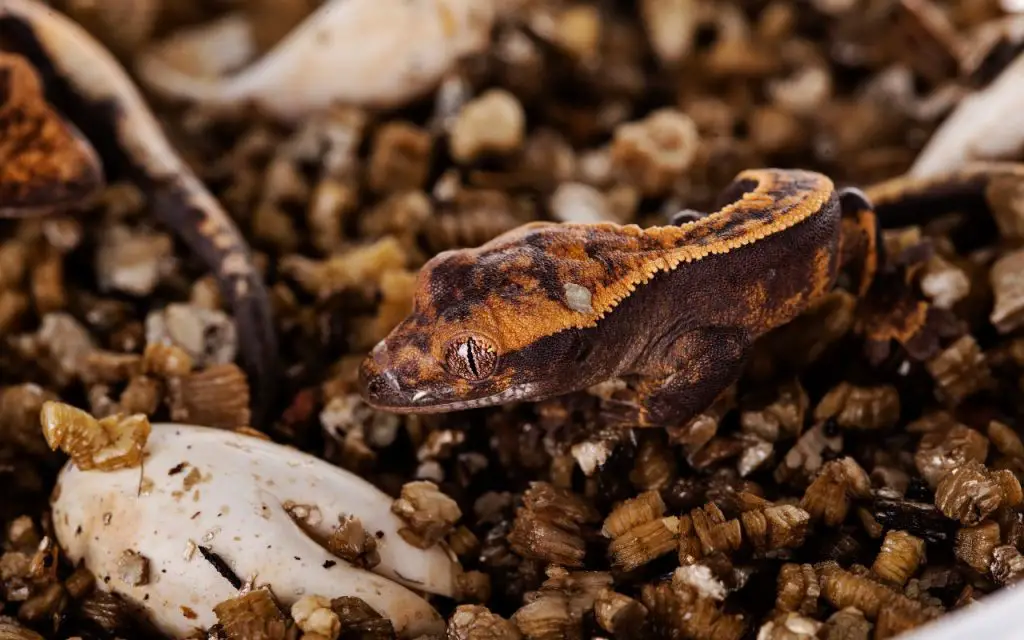
Breeding
Breeding crested geckos can be a fascinating venture. Most Cresties will breed readily when adult, and you can safely start when females are 40g+ and males 35-40g. Breeding them at lower weights is not advised, as it may cause health issues, such as egg-binding.
But remember, breeding requires extensive knowledge and commitment, so do thorough research before diving in!
Morphs
Crested Gecko morphs refer to the different color patterns and physical traits that these reptiles exhibit. These fascinating variations have emerged through selective breeding, and each morph comes with its unique aesthetic appeal.
One particularly eye-catching morph is the Dalmatian morph. Characterized by distinct black or red spots scattered over its body, like speckles on a Dalmatian dog, this morph is a favorite among enthusiasts.
The number of spots can range from just a few to several hundred, and they can appear over any base color, making each Dalmatian crested gecko uniquely beautiful. Their unique patterns and distinctive charm make the exploration of crested gecko morphs a truly exciting endeavor for reptile enthusiasts.
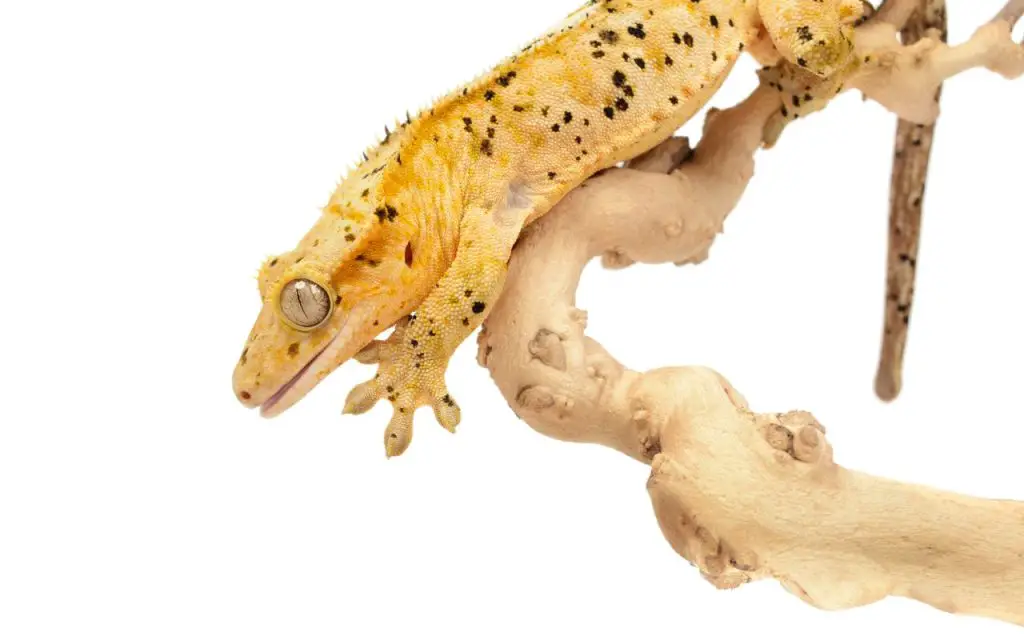
Crested Geckos for Sale
As with most reptiles Morphmarket.com is the best place to find Crested Geckos for sale. The breeders on that site are all subject to reviews, and you can easily check on how happy previous buyers were (or weren’t!).
Notwithstanding, there are also some amazing exotics pet stores that carry Cresties and even breed them themselves. If you have one near you it is worth checking out.
When buying a crested gecko, always choose reputable breeders or pet stores that ensure ethical practices. I’ve found some amazing crested geckos in reptile expos, and don’t forget about rescue centers!
Final Thoughts
There’s something truly enchanting about crested geckos, mainly due to their inquistive nature and docile personality. For me though, it’s their appearance that makes me like them.
If I was just getting into Cresties now, I’d invest in some morphs (color variations) right from the start. Their popularity only seems to be growing, and I’d want to get into breeding.
Here’s a table summarizing the crested gecko care guide for quick reference:
| Crested Gecko Care Aspect | Key Points |
|---|---|
| Tank | 20-gallon, plenty of vertical space |
| Diet | Pre-made crested gecko diet, supplemented with live insects |
| Size | 7-9 inches for adults |
| Temperature | 70°F-80°F |
| Humidity and Water | 50% during day, up to 80% at night |
| Lighting | Day-night cycle, no UVB needed |
| Hygiene | Regular and deep cleaning of the tank |
| Common Health Issues | MBD, Impaction, Dehydration |
| Friendliness | Usually very friendly, can be handled with care |
| Lifespan | 15-20 years |
| Breeding | Requires knowledge and commitment |
| Where to Buy | Morphmarket, reputable breeders, pet stores, reptile expos, rescue centers |
Remember, every crested gecko has its own unique personality and might need specific care. Always observe your pet’s behavior and consult a vet if you notice anything unusual. Happy reptile keeping!
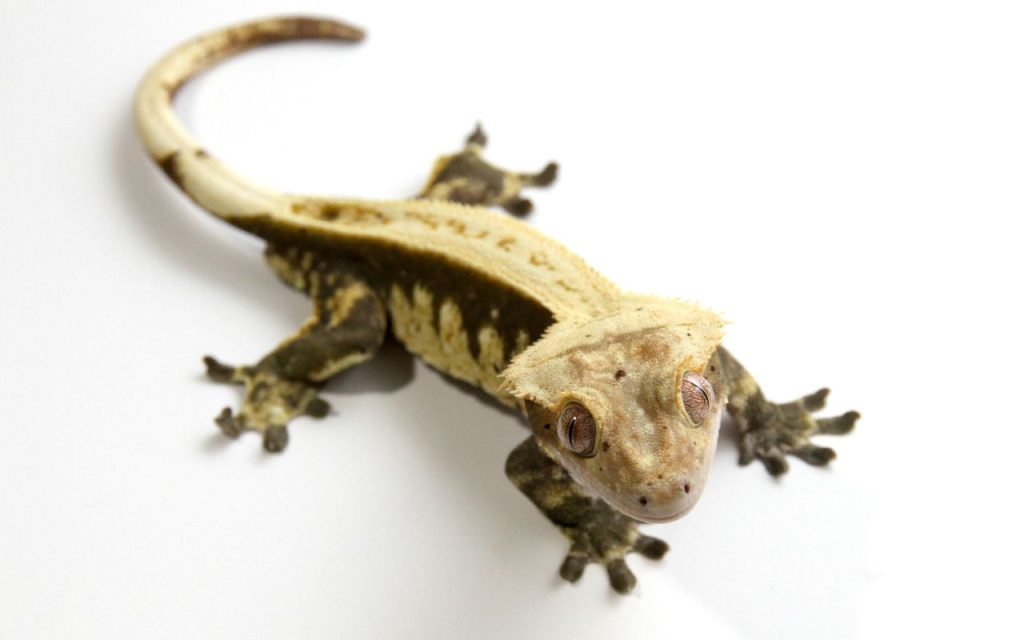
FAQ related to Crested Gecko Care
Are crested geckos easy to take care of?
Crested Geckos are easy to take care of, but not as easy as snakes. I say this because they are omnivorous, feeding on both fruit and animals in the wild. To prevent issues like metabolic bone disease, these lizards need regular vitamin supplementation and a varied diet.
Do crested geckos need a heat lamp?
Crested Geckos need a heat source if your house gets cooler than 70°F in the winter. Ideally, you should aim for a temperature of 70-75°F, with a warm spot as warm as 80°F. A heat lamp is one choice you can consider, but a ceramic heat emitter may be better, given that it doesn’t produce light. Heat lamps can disrupt the activity of nocturnal animals and cause long-term stress.
How often should you mist a crested gecko?
You should mist your Crested Gecko every couple of days if the humidity has fallen below 70%. Do not mist them every day, instead let them dry a little between misting. This will help simulate a more natural environment and prevent overgrowth of mold and germs.

